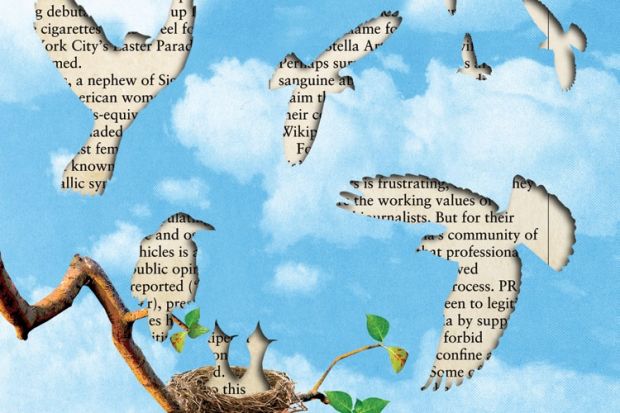Source: Miles Cole
I once referred to New Zealand’s native bird fauna as “buggered”, which it is, largely because most of it has been eaten by predators introduced by European settlers. And now, you may not realise it, but Britain and Ireland’s bird fauna is “buggered” too, although not quite as badly, and for different reasons.
If you are over 50, and maybe even if you aren’t, then the falling number of UK birds is blindingly obvious. Like me, you may remember in the 1960s and 1970s waking up to a dawn chorus of spring birdsong that filled your head. These days, even though I live in a much more rural environment, I’m lucky to hear a single blackbird.
The massive decline in many of our birds over the past 40 years – due mainly to the intensification of agriculture and, more recently, climate change – is a national disgrace. If a loss of wildlife of this magnitude – 44 million breeding birds over 40 years – had happened overnight, there would have been a national outcry. But like climate change itself, slow, insidious change goes almost undetected because our brains continually adjust to the shifting baseline.
Subjective impressions of loss, like my dawn chorus anecdote, are hardly sufficient to convince sceptical politicians that there’s a problem. Instead we need numbers, and numbers acquired by robust methodology. And thanks to the British Trust for Ornithology’s absolute commitment to monitoring, that’s what we have. Since the 1960s, the BTO has kept tabs on the numbers and geographic distribution of Britain and Ireland’s birds, producing at intervals reports including its most recent one, Bird Atlas 2007-11.
Comprising 720 pages, hundreds of maps and weighing about 2kg, you might be forgiven for thinking that a book such as this is intended only for nerdy birdwatchers; but you’d be wrong. This impressive project and equally impressive publication is important for everyone since it documents the changes in one of our most sensitive monitors of the quality of the British environment: birds. Compared with most mammals that we rarely see, we can monitor birds relatively easily. I say relatively, but this decade-long project relied on thousands of volunteer birdwatchers and is an extraordinary example of citizen science.
As with any atlas, the key feature of this one is its distribution maps. In startling detail these show where birds are, where they were, and also the changes – in most cases, reductions – within the UK.
As my colleague Mark Avery, a prominent eco-blogger, has said, it is extremely unlikely that any MP is going buy let alone read this atlas. So instead Avery plans to print postcards showing the range reduction maps of all those farmland birds that are in catastrophic decline: corn bunting, grey partridge, lapwing, yellowhammer, yellow wagtail, starling, turtle dove, to name a few. He then suggests that we send one each week to “every MP, every civil servant in Defra, every senior member of the National Farmers’ Union, every staff member of the Country Land & Business Association and every senior manager in every pesticide company”. I agree. How else do we get the message across that many of our bird species are in precipitous decline?
If you aren’t a birdwatcher or naturalist, you might ask whether it matters that so many of our birds are in decline. Increasingly it does matter, because increasingly we are realising just how important birds and other forms of wildlife such as butterflies, bees and wild flowers (also declining) are to our well-being.
Living in a world of rapidly diminishing wildlife is becoming increasingly dull. It is utterly pathetic that as a nation we seem so complacent, so satisfied by a tiny number of minute nature reserves – mere fragments of our natural heritage that are little more than informal zoos. It has become obvious through groups such as New Networks for Nature that many people including writers, artists, poets, musicians – and scientists themselves – need and are inspired by nature.
It is as though we once sat down each day to a table laden with interesting and nourishing food, but today we subsist on junk food, and are rapidly heading towards an even more monotonous diet of swede and turnips. The analogy with diet is ironic, however, because we now sit down to a more varied and interesting diet than we ever did – the result of avaricious agricultural policies – and this is precisely why our birds and other wildlife are in decline. At the rate we are going, we might continue to eat interestingly, but food will be one of the few remaining pleasures in a landscape devoid of birds.
Luckily, it isn’t all bad news. A few species have increased, including the Canada goose and ring-necked parakeet – both introduced and not always welcome. More hopefully, the buzzard and raven, both charismatic native species, have shown a spectacular eastward spread over the past 20 years. And there are some conservation success stories too: the reintroduction of red kites has been a great success. The other glimmer of hope is that the various bodies concerned about environmental deterioration have started to work together – evinced by the Royal Society for the Protection of Birds’ recent State of Nature report. We should capitalise on these few success stories and keep fighting for birds.
Register to continue
Why register?
- Registration is free and only takes a moment
- Once registered, you can read 3 articles a month
- Sign up for our newsletter
Subscribe
Or subscribe for unlimited access to:
- Unlimited access to news, views, insights & reviews
- Digital editions
- Digital access to THE’s university and college rankings analysis
Already registered or a current subscriber? Login





